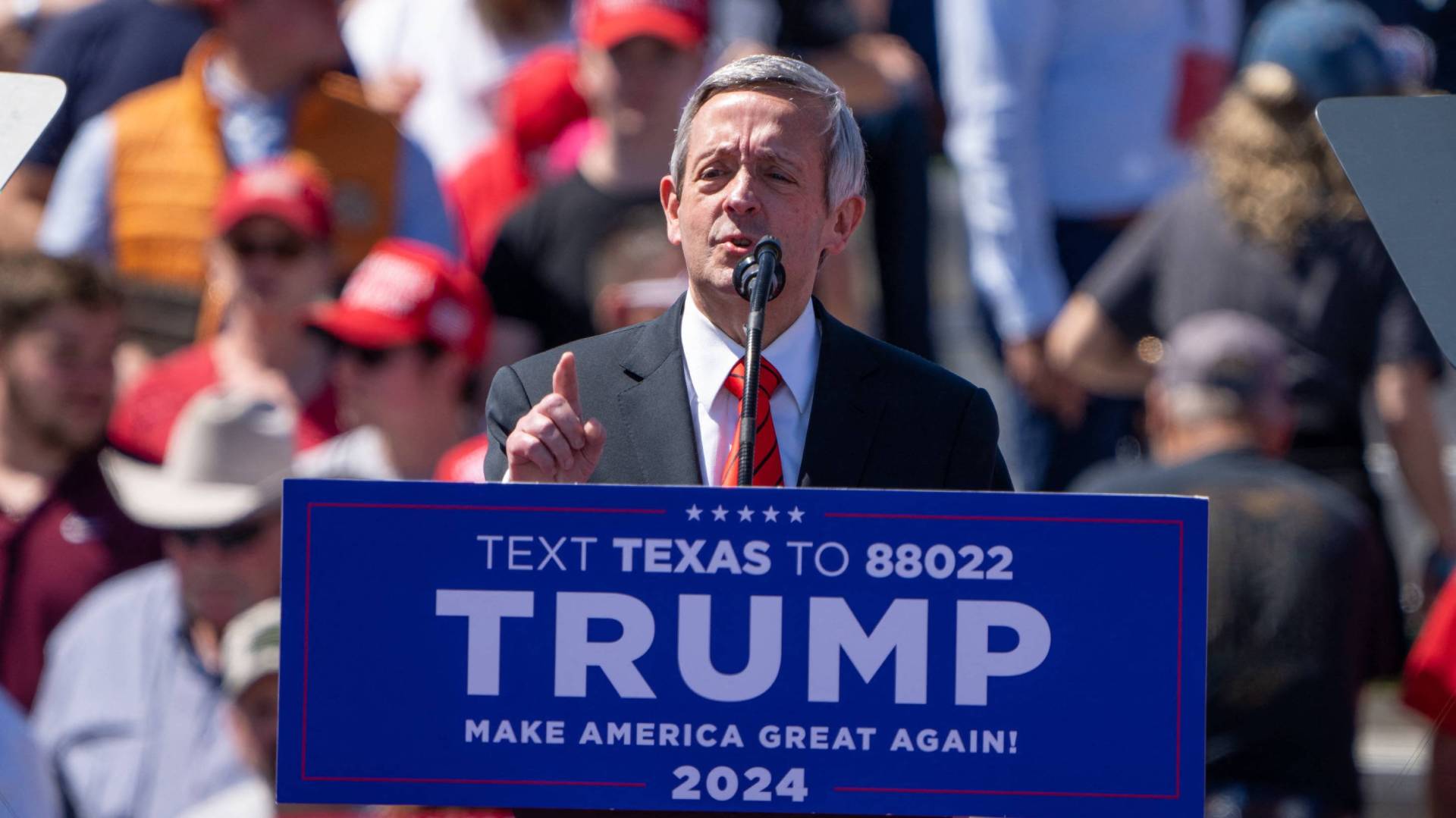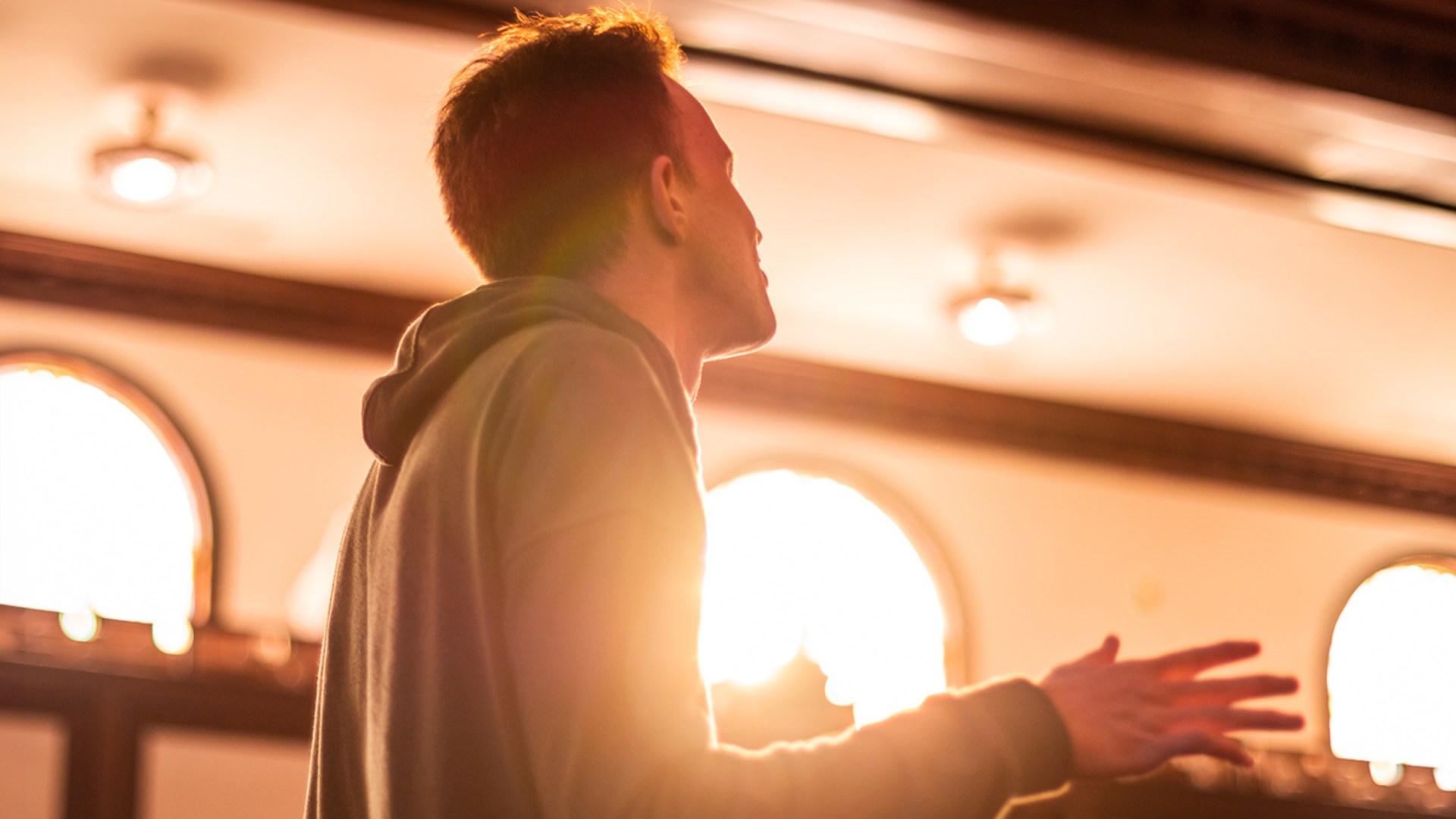Forget October surprises; this election season has already had a dizzying number of twists and turns: criminal trials, consequential debates, attempted assassinations, a candidate dropping out and being replaced, and new vice-presidential picks coming on the national scene.
And every major development has been accompanied by plenty of 24–48 hour sideshows—controversies, partisan squabbles, scandals, and conspiracy theories. The crush of news may be catching up to Americans: While nearly half of Americans say they follow political news “extremely” or “very” closely, 6 in 10 also told researchers that they “need to limit” their news consumption due to feeling overwhelmed, according to a survey by the Associated Press-NORC Center for Public Affairs Research and USAFacts.
Christians eager to be informed citizens can feel both obliged to keep up with the news and overwhelmed by the volume of stories and level of outrage cycling around them.
“We were not designed to drink from a fire hose in our lives when it comes to media consumption,” Ryan Burge, an Eastern Illinois University professor and religion and politics analyst, told CT. “Honestly, most days, there’s two or three things you need to pay attention to.”
Burge’s approach to news consumption is more a measured cup of tea than a drink from a fire hose. To catch up on events, he’ll go to Google News, look at the aggregation of headlines, scroll, and choose one to three stories to read.
“I read for five or ten minutes, I close it, I go do something else. I’m caught up,” Burge said. “Think about how much ephemeral stuff happens on a day-to-day basis in America, where you’ll completely forget about it in about 24 to 36 hours.”
CT asked several media-savvy Christians for their advice on engaging with the news during an election year—and all of them recommended reading less and using discernment to determine which stories really matter.
“We don’t need to give oxygen to the outrage du jour, whatever it happens to be at that moment,” said Jeffrey Bilbro, an English professor at Grove City College and editor of online magazine Front Porch Republic. “I don’t think there is anything wrong with checking out of the outrage cycle.”
When it comes to developing a Christian orientation to news consumption, Bilbro has spent enough time on the subject to write books about the topic. He personally takes a minimalist approach to consuming political coverage during election years, admitting freely that he tunes out of events like conventions or debates.
“My goal is to care about the November election to the extent that I have agency and responsibility regarding it,” Bilbro said.
His goal is to be informed enough to be confident about his vote but avoid a “disproportionate emotional investment in the whole spectacle that doesn’t benefit anybody, has no positive effect, and causes me anxiety, and likely distracts me from the issues and the people that I can be responsible for.”
Overly avid consumption, particularly consumption focused on controversies or conspiracies, can lead to a distorted perception where these flash-in-the-pan topics overtake issues closer to home. Bilbro has seen political hobbyists become less involved in their local communities and church life.
For Christians who find themselves getting angry after watching cable news or scrolling through social media, Bilbro said they should explore if their time would be better spent seeking out hands-on community involvement, from volunteering at church or a local organization to joining a book club.
Daniel Bennett, a political science professor at John Brown University and author of Uneasy Citizenship: Embracing the Tension in Faith and Politics, advised Christians to dedicate more time to stories that impact them, or ones they have agency to impact in turn.
“I would pay attention to the stories or issues that are affecting you and your community more personally,” he said. “Rather than latching on to whatever is designed to get clicks by highlighting this one small town in this one state that you’ve never been to and letting that really fire you up, instead focus on, What’s going on in my community? What are the big issues that are influencing my neighbors? How can our church serve in these ways?”
Bilbro also pointed out the necessity to be mindful of which stories and outlets we choose.
“As fallen creatures, we tend to be drawn toward things that titillate us, that are exciting and interesting and shocking and rile us up. When we give into those cravings, we reinforce and support journalistic models that feed them,” he said. “I would hope that we could, as Christians, try to recognize that in ourselves, and then try to patronize different kinds of news, different kinds of journalism.”
Paul Glader, a journalism professor at the recently closed King’s College who has worked for outlets including The Wall Street Journal, CNN, and the Associated Press, recognizes the importance of media literacy.
In a world where misinformation and disinformation from foreign actors and anonymous pages posing as credible sources are a reality, he says Americans should approach sources and stories “critically but not cynically.”
Good outlets are recognizable because they take steps like clearly differentiating opinion from news, having a track record of reporting truthfully, and issuing corrections if and when errors are published, he noted. For outlets or journalists with a trustworthy record, he advised supporting that work through subscriptions or following them.
“People should shun sites and outlets that blatantly and repeatedly disregard the truth and facts,” he said. “The hallmark of a good news organization is, in my opinion, one that corrects and acknowledges its own mistakes. That is a Christian virtue and a virtue of quality news organizations.”
Glader cautioned against only reading outlets that align with your worldview and challenged Christians to pick one or two from a slightly different worldview or political view “to help you see how other parts of America are taking in information or presenting information.”
Exposure to different views can also help Christians break out of an echo chamber. “Remember, hey, there’s people who may go to my church or may live in my community who think differently.”
Bonnie Kristian, editorial director of ideas and books at Christianity Today, as well as an author and opinion writer, said much of how Christians should consume the news boils down to capacity and disposition.
“If you like following this stuff, if it’s intriguing for you to track the changes in our culture and governance in real time, then—with all due caveats about rightful priorities for a Christian’s time and attention—I’d say have at it,” she said. “But if politics is nothing but a duty for you, and perhaps a quite unpleasant one, don’t.”
Like others, Kristian said the amount of attention to pay also depends on the particular political race in question. Most voters are extensively familiar with Trump and “unless you’ve been in a coma and made a miraculous recovery, you probably don’t need to spend any time on his latest hijinks to know basically who he is and how he’ll govern.”
A new cast of characters, say, Minnesota governor Tim Walz or Ohio senator JD Vance might be different.
“Learn what you can about the candidate’s character; read insightful commentary about bigger issues in play if you encounter it; but don’t get bogged down in every detail of partisan bickering over competing or even unverifiable accounts,” Kristian said.
“There is plenty of passing garbage you can safely ignore. If you find yourself getting caught up—and worked up—over something your conscience is whispering is inconsequential, consider leaving it alone just for 24 hours, then seeing if you still care tomorrow.”
Burge also encourages readers to skip over the quick hits for bigger themes.
His advice to people who want to be informed is to skim the surface, resist doing a deep dive into clickbait, then sit back and think. “Let’s not say, Don’t be informed. But be macro-level informed.”
Stories that are flash-in-the-pan controversies lead him to ask questions like, “How can this story speak to the larger narratives that are happening in America, in the West? That’s how I consume news, is [asking], how does this little chapter fit into the bigger book?”
He’s found that in his newsletter, Graphs About Religion, topics related to current controversies get less traction and fewer views than stories dealing with more timeless themes. Burge, who also pastored a Baptist church for 20 years, believes this shows people are in search of “eternal, long-ranging trends and truths … compelling, interesting pieces of analysis that will stand the test of time.”
But ultimately, Christians interested in news should proceed with discernment, while others should not feel guilty for taking several steps back.
“If staying up on politics leaves you angry, jittery, fearful, or unpleasant, as it does for many people,” Kristian pointed out, “you can learn all you need to know to make a well-informed vote from a few hours of reading the Saturday before Election Day.”













































































